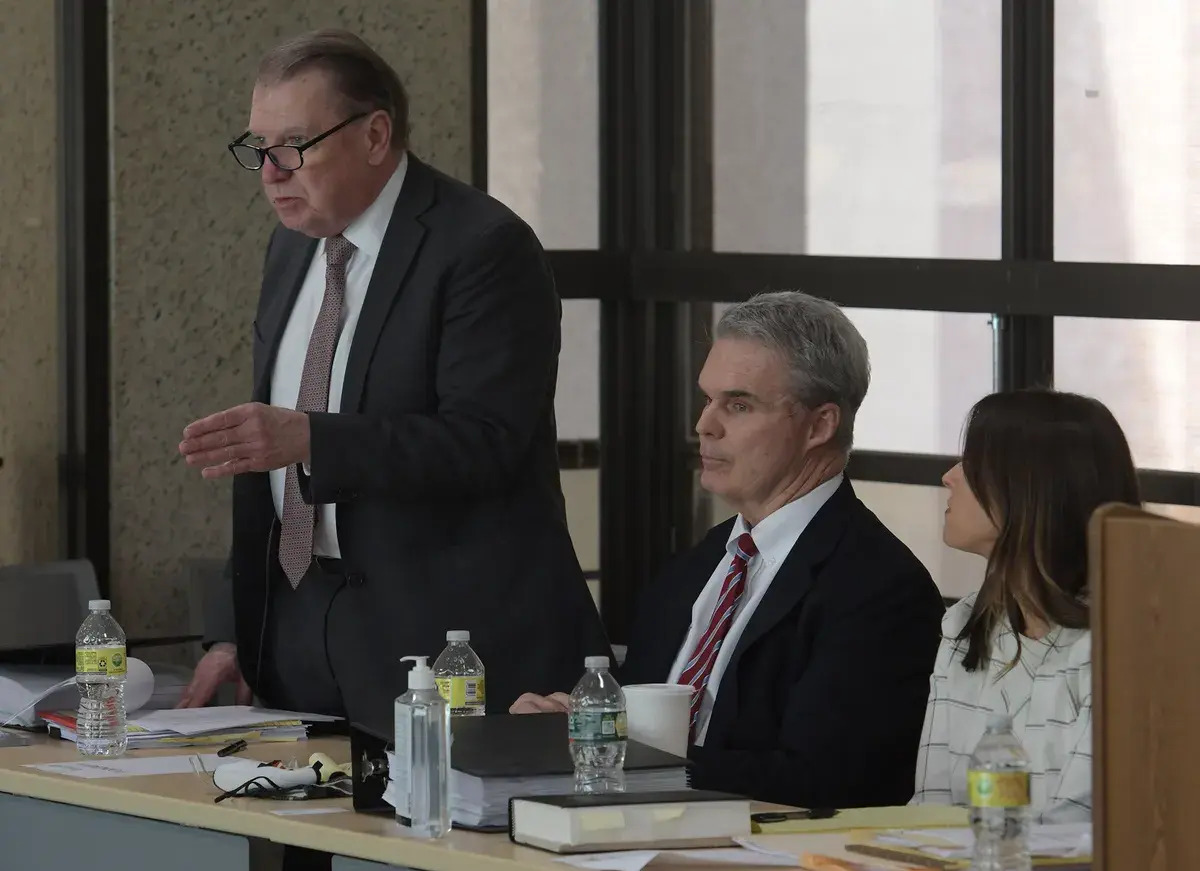
What is Troopergate? Troopergate refers to a political scandal involving allegations of abuse of power by public officials. The most notable Troopergate occurred in 2008, involving then-Alaska Governor Sarah Palin. She was accused of pressuring state officials to fire her former brother-in-law, a state trooper. This scandal raised questions about ethics, power dynamics, and political accountability. While Troopergate primarily centers on Palin, similar incidents have surfaced in other states, each with unique twists and turns. Understanding Troopergate helps us grasp the complexities of political influence and the importance of ethical governance. Let's dive into 40 intriguing facts about Troopergate that will shed light on this captivating political drama.
Key Takeaways:
- A scandal called Troopergate involved Alaska Governor Sarah Palin pressuring officials to fire her ex-brother-in-law. It sparked national discussions about ethics in politics and the importance of holding public officials accountable.
- The scandal had lasting effects on public trust in government officials and prompted discussions about ethics reforms. It also highlighted the intersection of personal matters with public responsibilities.
What is Troopergate?
Troopergate refers to a political scandal involving allegations of abuse of power by public officials. The term has been used in different contexts, but it is most famously associated with the 2008 investigation into then-Alaska Governor Sarah Palin. Here are some intriguing facts about Troopergate.
-
Origin of the Name: The term "Troopergate" is a play on the infamous Watergate scandal. It combines "trooper," referring to law enforcement officers, with "gate," a suffix used for political scandals.
-
Sarah Palin's Involvement: Sarah Palin, the Governor of Alaska in 2008, was at the center of the Troopergate scandal. She was accused of using her position to pressure officials into firing her former brother-in-law, Mike Wooten, a state trooper.
-
Mike Wooten: The trooper at the heart of the scandal, Mike Wooten, had a contentious divorce from Palin's sister, Molly McCann. This personal connection fueled allegations of a vendetta.
-
Public Safety Commissioner: Walter Monegan, the Public Safety Commissioner, was fired by Palin. He claimed his dismissal was due to his refusal to fire Wooten, which Palin denied.
-
Legislative Investigation: The Alaska Legislature launched an investigation into the allegations. This bipartisan committee aimed to determine if Palin had abused her power.
-
Branchflower Report: The investigation led to the Branchflower Report, named after investigator Stephen Branchflower. It concluded that Palin had violated the Alaska Executive Branch Ethics Act.
-
Ethics Act Violation: The Branchflower Report found that Palin's actions were in violation of the Alaska Executive Branch Ethics Act, which prohibits using public office for personal gain.
-
Palin's Defense: Palin maintained that Monegan was fired for budgetary reasons and poor performance, not because of Wooten. She denied any wrongdoing throughout the investigation.
-
Public Reaction: The scandal drew significant media attention, especially since Palin was the Republican vice-presidential nominee at the time. Public opinion was divided on the issue.
-
McCain Campaign: John McCain's presidential campaign was affected by the scandal. Some believed it hurt Palin's credibility as a vice-presidential candidate.
The Investigation Process
The investigation into Troopergate was thorough and involved multiple steps. Here are some key aspects of the process.
-
Subpoenas Issued: The Alaska Legislature issued subpoenas to several individuals, including Palin's husband, Todd Palin, and other state officials.
-
Todd Palin's Role: Todd Palin admitted to contacting state officials about Wooten. He claimed he was concerned about Wooten's behavior and potential threat to the family.
-
Testimonies: Numerous testimonies were collected during the investigation. These included statements from state officials, family members, and others involved.
-
Document Review: Investigators reviewed thousands of pages of documents, including emails, memos, and other communications related to the case.
-
Public Hearings: Some aspects of the investigation were conducted in public hearings, allowing for transparency and public scrutiny.
-
Legal Counsel: Both sides had legal representation. Palin's legal team argued against the allegations, while the legislative committee's counsel presented evidence of potential misconduct.
-
Media Coverage: The investigation received extensive media coverage, with news outlets reporting on every development. This heightened public interest in the case.
-
Ethics Complaint: An ethics complaint was filed against Palin, alleging she had abused her power. This formalized the allegations and prompted the investigation.
-
Independent Investigator: Stephen Branchflower, a former prosecutor, was appointed as the independent investigator. His role was to conduct an impartial review of the evidence.
-
Final Report: The Branchflower Report was released in October 2008. It detailed the findings of the investigation and concluded that Palin had violated ethics laws.
The Aftermath of Troopergate
The Troopergate scandal had lasting effects on those involved and on public perception. Here are some of the outcomes.
-
Palin's Popularity: Despite the scandal, Palin remained popular among her supporters. However, it did impact her overall public image.
-
Political Ramifications: The scandal had political ramifications for Palin's career. Some believe it hindered her chances of higher office.
-
Media Scrutiny: Palin faced increased media scrutiny following the scandal. Her actions and decisions were closely examined by journalists and commentators.
-
Ethics Reforms: The scandal prompted discussions about ethics reforms in Alaska. Some called for stricter regulations to prevent similar incidents in the future.
-
Public Trust: The scandal affected public trust in government officials. It highlighted the importance of accountability and transparency in public office.
-
Legal Consequences: While Palin was not criminally charged, the findings of the Branchflower Report had legal implications. It underscored the need for adherence to ethics laws.
-
Family Impact: The scandal had a personal impact on Palin's family. The public nature of the investigation brought personal matters into the spotlight.
-
Wooten's Career: Mike Wooten continued his career as a state trooper. The investigation did not result in his termination, despite the allegations against him.
-
Monegan's Career: Walter Monegan pursued other opportunities after his dismissal. He remained a vocal critic of Palin's actions.
-
Public Awareness: The Troopergate scandal raised public awareness about the potential for abuse of power. It served as a reminder of the importance of ethical conduct in public office.
Broader Implications of Troopergate
Troopergate had implications beyond Alaska, influencing national discussions about ethics and governance. Here are some broader impacts.
-
National Attention: The scandal received national attention due to Palin's role as a vice-presidential candidate. It brought issues of ethics and governance to the forefront.
-
Campaign Impact: The McCain-Palin campaign had to address the scandal during the 2008 presidential race. It became a point of contention in the election.
-
Ethics in Politics: Troopergate sparked discussions about ethics in politics. It highlighted the need for clear guidelines and accountability for public officials.
-
Media's Role: The media played a significant role in covering the scandal. It demonstrated the power of journalism in holding public officials accountable.
-
Public Perception: The scandal influenced public perception of Palin and other involved parties. It showed how personal matters can intersect with public responsibilities.
-
Legal Precedents: The findings of the Branchflower Report set legal precedents for future cases involving allegations of abuse of power.
-
Political Strategy: Troopergate influenced political strategies. Candidates and campaigns became more aware of the potential impact of personal scandals on public office.
-
Ethics Training: The scandal underscored the importance of ethics training for public officials. It highlighted the need for ongoing education on ethical conduct.
-
Legislative Oversight: The investigation demonstrated the importance of legislative oversight. It showed how legislative bodies can hold executives accountable.
-
Public Engagement: Troopergate engaged the public in discussions about ethics and governance. It encouraged citizens to be more vigilant and informed about their leaders' actions.
Final Thoughts on Troopergate
Troopergate remains a significant event in political history. It highlighted the complexities of power, ethics, and accountability. The scandal involved allegations of misuse of power by then-Governor Sarah Palin, focusing on the firing of Public Safety Commissioner Walt Monegan. The investigation brought to light various aspects of political maneuvering and personal vendettas. Despite differing opinions on the outcome, Troopergate serves as a reminder of the importance of transparency in government. It also underscores the need for public officials to be held accountable for their actions. Whether viewed as a political witch hunt or a legitimate inquiry, Troopergate continues to be a topic of discussion and analysis. Understanding this event helps us better grasp the intricate dynamics of political power and the ongoing quest for ethical governance.
Frequently Asked Questions
Was this page helpful?
Our commitment to delivering trustworthy and engaging content is at the heart of what we do. Each fact on our site is contributed by real users like you, bringing a wealth of diverse insights and information. To ensure the highest standards of accuracy and reliability, our dedicated editors meticulously review each submission. This process guarantees that the facts we share are not only fascinating but also credible. Trust in our commitment to quality and authenticity as you explore and learn with us.


